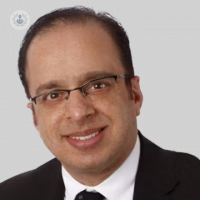Rhinoplasty: How safe is it? And what’s involved?
Written in association with:Rhinoplasty, commonly referred to as a ‘nose job,’ is a surgical procedure designed to alter the shape, size or functionality of the nose. It’s one of the most frequently performed cosmetic surgeries worldwide and is often sought for both aesthetic and medical reasons.
While the popularity of Rhinoplasty is well-known, patients often have concerns about the safety of the procedure and what it entails. Here to address these concerns is leading Facial Cosmetic and ENT surgeon Mr Aftab Ahmed.

How safe is Rhinoplasty?
Rhinoplasty is generally considered a safe procedure when performed by a qualified and experienced surgeon. Like any surgery, it carries some risks, but complications are relatively rare. Here are a few key factors that contribute to the safety of rhinoplasty:
- Surgeon expertise: The skill and experience of the surgeon are critical in ensuring the safety and success of the procedure. Board-certified plastic surgeons or ENT specialists with extensive experience in rhinoplasty are best equipped to handle the intricacies of the surgery.
- Preoperative assessment: A thorough preoperative evaluation is essential. This includes discussing your medical history, conducting physical examinations, and sometimes taking photographs or performing imaging studies. These steps help the surgeon plan the procedure and anticipate any potential challenges.
- Anaesthesia: Rhinoplasty is usually performed under general anaesthesia, ensuring that you are asleep and pain-free during the procedure. The use of general anaesthesia is safe for most patients, but an anaesthetist will assess your overall health to minimise any risks.
- Postoperative care: Proper postoperative care is vital in reducing the risk of complications. Following the surgeon’s instructions, such as avoiding strenuous activities, not blowing your nose, and attending follow-up appointments, can significantly enhance your recovery and minimise risks.
What’s involved in Rhinoplasty?
Rhinoplasty can be customised to address a variety of concerns, whether they are cosmetic, functional or a combination of both. The procedure typically involves the following steps:
- Consultation: During the initial consultation, you'll discuss your goals and expectations with the surgeon. The surgeon will assess your nasal structure, skin quality, and overall facial balance to determine the best approach to achieve your desired outcome.
- Surgical technique: Rhinoplasty can be performed using two primary techniques:
- Closed Rhinoplasty: In this technique, all incisions are made inside the nostrils, resulting in no visible scarring. This approach is often used for minor adjustments.
- Open Rhinoplasty: For more complex cases, an incision is made across the columella (the tissue between the nostrils) to allow better access to the nasal structures. This method provides greater precision in reshaping the nose.
- Reshaping: The surgeon may remove, add, or rearrange bone and cartilage to achieve the desired shape. In some cases, tissue grafts may be used to enhance the nasal structure.
- Closing the incisions: Once the reshaping is complete, the incisions are closed with sutures. The surgeon may place a splint on the nose to help maintain its new shape during the initial healing period.
- Recovery: After the procedure, you can expect some swelling, bruising, and discomfort, which are normal and should subside within a few weeks. The final results of rhinoplasty can take up to a year to fully manifest as the swelling gradually decreases.
Rhinoplasty is a safe and effective procedure when performed by a qualified surgeon. It offers significant benefits for individuals seeking to improve the appearance or function of their nose. Understanding the risks, the surgical process, and the recovery timeline can help you make an informed decision about whether Rhinoplasty is right for you.
Looking for a gold-standard Rhinoplasty? Arrange a consultation with Mr Ahmed via his Top Doctors profile.


